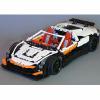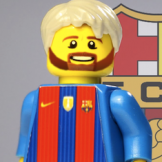-
Content Count
2014 -
Joined
-
Last visited
About Lipko

- Birthday 06/13/1985
Spam Prevention
-
What is favorite LEGO theme? (we need this info to prevent spam)
Technic
Profile Information
-
Gender
Male
Extra
-
Country
Hungary
-
Special Tags 1
https://www.eurobricks.com/forum/public/style_images/tags/technic_pro.png
-
Special Tags 2
https://www.eurobricks.com/forum/public/style_images/tags/technic_gold.png
-
Special Tags 3
https://www.eurobricks.com/forum/public/style_images/tags/technic_silver.png
-
Special Tags 4
https://www.eurobricks.com/forum/public/style_images/tags/technic_pneumatic.png
Recent Profile Visitors
The recent visitors block is disabled and is not being shown to other users.
-

What is your favorite Technic Set and why?
Lipko replied to Lego Tom's topic in LEGO Technic, Mindstorms, Model Team and Scale Modeling
Interesting that there's only one mentioning of 8110 Unimog. It was by far the most desired set for me as an adult, it basically has the function of AROCS (or whatever the order of the letters), but I didn't quite like the latter. I know everyone loves it, but the whole chassis felt soft and the chassis looked a bit messy for me. The 8110 worked and looked awesome probably because the real Unimog also looks kind of toyish, and I prefer Lego models with a bit of toyish looks. It was also a very good parts pack with the wheels. 8109 Flatbed truck and 8396 helicopter were also very good sets. I admit I haven't bough a set since at least 6 years. -

[CADA] CADA General Discussion Topic
Lipko replied to Milan's topic in LEGO Technic, Mindstorms, Model Team and Scale Modeling
LOL How was 8070 a Dodge Viper? You are bending reality too much here to support your narrative -

Fluffy, an oversized proof of concept
Lipko replied to Attika's topic in LEGO Technic, Mindstorms, Model Team and Scale Modeling
I saw it ín real life. It's brutal, yet running very smoothly and gently. Like some Boston Dynamics stuff. My mind was blown.- 19 replies
-
- rc
- brickbuilt wheel
-
(and 1 more)
Tagged with:
-
Thatcrazycarkid started following Lipko
-

[MOC] Peugeot 2008 DKR 1:10 (Dakar Rally)
Lipko replied to Lipko's topic in LEGO Technic, Mindstorms, Model Team and Scale Modeling
Sorry for not answering the questions. I won't have time to make instructions unfortunately, I don't even know if I will get to digitizing the thing. I like the flipflop thing too but I still can't use it in such a clean way as I hoped, so I didn't feel that game-changing feel yet. Though I have to admit I used them frequently and wondered how I could have lived without those, but that's pretty much true for any new parts I encounter. The frames at various sizes, now that's someting I admire. -

[MOC] Peugeot 2008 DKR 1:10 (Dakar Rally)
Lipko replied to Lipko's topic in LEGO Technic, Mindstorms, Model Team and Scale Modeling
Thank you for the kind comments and the frontpage! The full gallery became public: https://brickshelf.com/cgi-bin/gallery.cgi?f=587266 About the recognizability: maybe I looked at the model and the reference pictures too much, that's why I don't feel it's right. The real one is more round and prettier, though it is evident that the shape of the real car changed a few times, The Lego model is more like the prototype, and I think it got a bit rounder for the actual race. Or whatever, it's sure that the air intakes at the sides and the roof changed significantly. Sometimes even the die cast models look a bit off. Certainly it would help a lot if it was possible to built it in the real Red Bull race livery. -

[MOC] Peugeot 2008 DKR 1:10 (Dakar Rally)
Lipko posted a topic in LEGO Technic, Mindstorms, Model Team and Scale Modeling
Hi all! After a five year long break, I’m back with yet another manual 1:10 car. This time not a custom car, but a Dakar rally car (technically a buggy) modeled after an actual car. This is supposed to be a Peugeot 2008 DKR, the comeback of Peugeot to the Dakar rally in 2015. The comeback was not successful in the race, but the concept was. Its successor owned the Dakar in the following years because of the following innovative idea: Rear wheel drive instead of the usual 4 wheel drive. This allowed the car to enter in the buggy category with less restrictions. Anyways, my model’s story is analogous because it was supposed to be my great comeback, but didn't turn out to be that good that I wanted. Features: Independent suspension, with pushrod on the rear Mid mounted V6 fake engine Detailed engine bay 4-speed sequential gearbox and D-N-R selector. Used the stepper mechanism by Didumos HOG steering with working steering wheel Built-in car lifts that can be operated with a small separate tool. It’s operated with a linkage instead of a worm screw mechanism, so it’s not able to lift the car without help, but it’s quickly deployable. I think it’s a good compromise for better playability. Everything opens SPARE WHEELS!!!1 Spare wheels is the main feature of the model because it was the mostest biggest challenge in the whole g… model. I had to ditch adjustable suspension, wheel wells (which is a characteristic visual feature in such high cars), advanced suspension geometry and a stiffer chassis in order to make space for the spares. I redesigned the front suspension from zero at least five times. The gearbox: Sux. For some reason the gearbox stopped working smoothly in first gear when pushed forward, and I never found the cause. Unfortunately the design by @Anto came late, it would have been a perfect fit for the model. As the real car has 6 speed sequential gearbox, and obviously no need for a separate D-N-R selector. Design highlights, experiences, misc: Rollcage. I will make some poorer quality pictures when I’ll have time. This is my first time apart from my very first MOCs that was completely designed without CAD. No proper computer, no time etc. My first model with system pieces not just for tiny details. I think it turned out pretty well. I only used photos as reference, the blueprints that were available were obviously wrong. After almost finishing the model, I realized that I should have simply bought a diecast model for reference. Maybe for my next MOC. My first experience with the flipflop beams. Stickers. Over multiple pieces. Don’t hate me too much. Didn't pay that much attention to everything being in system. Durable, at least 100 people played with the model at an exhibition It’s hard to estimate the work hours, there were days when I only worked on it for five minutes, weeks without any work, etc. It is about 160…200 hours. The suspension stiffness/bounciness is perfect, my best yet Overall I still don’t know if I’m satisfied or not. The biggest problem is that the model isn’t really recognizable, though the task was not easy, because the original car is not that characteristic either. I hope you like it anyway and sorry for the sloppy writing, I’m always in a rush these days. VIDEO: https://youtu.be/ka_mlEmMxNk?si=S0ZGd-FXzU5pUteE -

Questions for LEGO Engineers
Lipko replied to decemberssecond1's topic in LEGO Technic, Mindstorms, Model Team and Scale Modeling
I also think it's an important thing, because Lego is primarily for kids and playing. For me, making fragile shelf only models is ignoring the medium's main aspect. I hope no one gets offended, it's just an opinion. By the way, my models were tested by hundreds of kids at exhibitions. Usually I don't visit Lego exhibitions, but I haven't seen or heard about any of them where the visitors could interact directly with the model, and the model wasn't made for a specific game. Kids are smarter and more careful than most of us think. My models have some flimsy stuff, yet those fall off only rarely and it's always easy to fix, because above the age of 3, they feel that something is at its extreme and won't force it further. If the linear actuators click like crazy, they will usually do something about it. If you can't make something sturdy, then make it easy to repair. For example be prepared that the HOG will be pulled out frequently. Plan for that. Actually, Technic is about functions too, and I don't know how you can show it on an exhibition without interacting with the model. And doing it ax an exhibitor for two days is extremely exhausting and a bit awkward too. Let the visitors explore and help if there's a problem or question. My latest model which I will publish in 1-2 months was not so strictly designed due to time restictions, there are a lot of system parts that can fall off. Yet, it withstand the latest exhibition. I only had to be close so click back the stuff that fell off. Even the airplane was totally playable and sturdy, yet it's a slim and large model. -

Questions for LEGO Engineers
Lipko replied to decemberssecond1's topic in LEGO Technic, Mindstorms, Model Team and Scale Modeling
Usually own mechanisms to fit the system (unless a main feature is the faithfullness to the real mechanism). Aestetics is slightly above function. Playibility, sturdiness, building experience (the interestingness of the internal non-visible stuff) somewhere between the two. Not much, but more and more lately, because I don't have many system parts. And most of the time I find system details to fall off easily, thus making the model less playable and trickier to grab. I like to build stuf that's pretty (and I don't care about uniquness), but also the exact topic should not exist yet in high quality. I don't want to repeat, and I don't want to make lower quality model of something that's already done. To put it another way: I only build a model if I think I can add something that's was not done (too much) yet. For example I'd probably never make yet another Baja truck, but my latest model is a Dakar buggy (I haven't seen many Technic Dakar buggies yet). My telehandler model had auto-leveling pallet fork, and my pneumatic backhoe had a proper interior without the usual spagetti of tubes in place. Also that's the reason I prefer custom car designs. I look for existing real life solutions first. If I get stuck, I look for existing Lego solutions. I usually build a separate mockup version with a rudimentary frame to design a specific feature. I have experience, and my general approach is not much different: less thinking, more research and testing. Though one thing is different: in real life, my first iteration usually works (and since I don't design stuff for the market, I don't have to optimize). But Lego design takes many iterations and/or versions because of the material's restrictions and limited parts inventory. For me, Lego design is much more about 3D puzzles (which I suck at) than engineering. Engineering (for someone with a degree) in Lego is usually very basic stuff, that you can simply look up if you don't know about yet. I built a pretty good airplane not because I knew anything or care about planes, but because I did a tiny bit of research. I have a more complete collection of Techinc parts (that's also the main reason I find it easier to work with than regular Lego). Buy some sets and build them. Also the B model if available. And build a big, complete but simple MOC without refining too much. Don't care about perfectness yet. Participate in contests, especially if the theme is outside your comfort zone. And go for the win. Also, I think it was important for me that I was always into modelling of some sort before Lego, so I guess trying out some die cast stuff or computer 3D won't hurt. -

48-Hour MOC Challenge General Discussion Topic
Lipko replied to 2GodBDGlory's topic in LEGO Technic, Mindstorms, Model Team and Scale Modeling
I don't think you have to overcomplicate it. Programming jams are a pretty common thing, might be a good idea to look into them for some inspiration. Once I participated in a 72-hour contest and won it. This didn't mean 72 hours of non-stop coding and asset making, I did maybe 10 hours a day for three days. There were some rules but in general you were allowed to use whatever tools you had, no-one could/wanted to chenk if you reuse code, assets or whatever. The key is to make these event frequent and schedulable (say every months or two weeks) and to vary the topic wildly but make each topic specific enough to minimize the propability that someone has already got a finished model that fits, so that differences between the participators' possibilities equalize in the longer term. But it's impossible to make one singe building-jam as balanced as a big contest. Ideas: machine for a very specific but stupid task, say cigar lighter and sucker machine. This cn be reused many times some vehicle from a not very widely known cartoon/film dunno -

General Part Discussion
Lipko replied to Polo-Freak's topic in LEGO Technic, Mindstorms, Model Team and Scale Modeling
Doesn't it bend more than it twist? Acting as a transverse leaf spring?- 4620 replies
-
- Bionicle Technic
- rant!
-
(and 1 more)
Tagged with:
-

[TC26] Mobile Penguin Washing Station
Lipko replied to Burko-uk's topic in LEGO Technic, Mindstorms, Model Team and Scale Modeling
I always assumed arctic (with lovercase 'a') means both areas. The classic arctic city theme vehicles are typical Antarctic stuff, i guess it's more interesting area than the Arctic from scientific point of view. -
Thanks! I also found that piece, the problem is with the cylindrical part of the reservoir. I decided to use https://www.bricklink.com/v2/catalog/catalogitem.page?P=6014b&C=5#T=C&C=5 wheels. It's not possible to build a standalone extinguisher model with it, but it can be fixed to some chassis with some rubber bands. Not the best solution, but okay.
-
Hi all! I'm not experienced with system parts, only with Technic, and I run into a problem. I am currently making a 1:10 rally car and I want to make a handheld fire extinguisher. The ideal size would be a 1.5 stud diameter extinguisher, the typical Lego 2 stud diameter model looks out of place in the cockpit. The closest I could come up with uses red minifig heads and I would hide the bottlenecks somehow. I don't have red head parts at hand and I am looking for better ideas. Please don"t hesitate to give this noob some advice! Lipko
-

42167 Mack LR Electric Garbage Truck
Lipko replied to Ngoc Nguyen's topic in LEGO Technic, Mindstorms, Model Team and Scale Modeling
That kind of mechanism we see all the time in GBCs in principle. The fact that it looks so close to the Ideas implementation is simply because the specific conditions are the same. An optimal solution to a problem is an absolute, specific thing, not a matter of opinion and taste. As an engineer by profession I can say that pretty much everything that can be solved mechanically is solved and used in industry at least since 70 years ago. -

MOCs versus sets
Lipko replied to PlopiNinetySix's topic in LEGO Technic, Mindstorms, Model Team and Scale Modeling
Also, in many cases MOCers tend to disregard research, I saw some huge mistakes ín even great MOCs, for example engine is at the wrong place...




